
©️ 2022 James Christopher Knight
In This Issue of The Paris Love Letter
Cafe Culture: Brasserie Lipp
Hidden Gems: The Enchanted Fairground – A Journey Through Musée des Arts Forains
Travel Tips: Serenity Amidst the Streets – Paris' Hidden Courtyards
Art & Literature: Marguerite Duras – Echoes of Colonial Vietnam in "The Lover"
A Peek into History: Père Lachaise Cemetery – Where Stories of Paris Linger
Fun and Unusual Stuff: Paris From a Balloon!
Featured French Song: Le Festin- Camille (Ratatouille Soundtrack)
Found in Paris - Fun & Useful Stuff From The Web
➡️ Paris Café Music: Jazz Radio - If you like jazz, check out JazzRadio online. I'm currently listening to the Paris Café station, a favorite of mine, on low volume while working. It's also great for adding a Paris Café vibe to dinner parties.
➡️ Banks of the Seine: A UNESCO World Heritage Site - From the Louvre to the Eiffel Tower, from the Place de la Concorde to the Grand and Petit Palais, the evolution of Paris and its history can be seen from the River Seine. The Cathedral of Notre-Dame and the Sainte Chapelle are architectural masterpieces, while Haussmann's wide squares and boulevards influenced late 19th- and 20th-century town planning the world over.
Café Culture: Brasserie Lipp
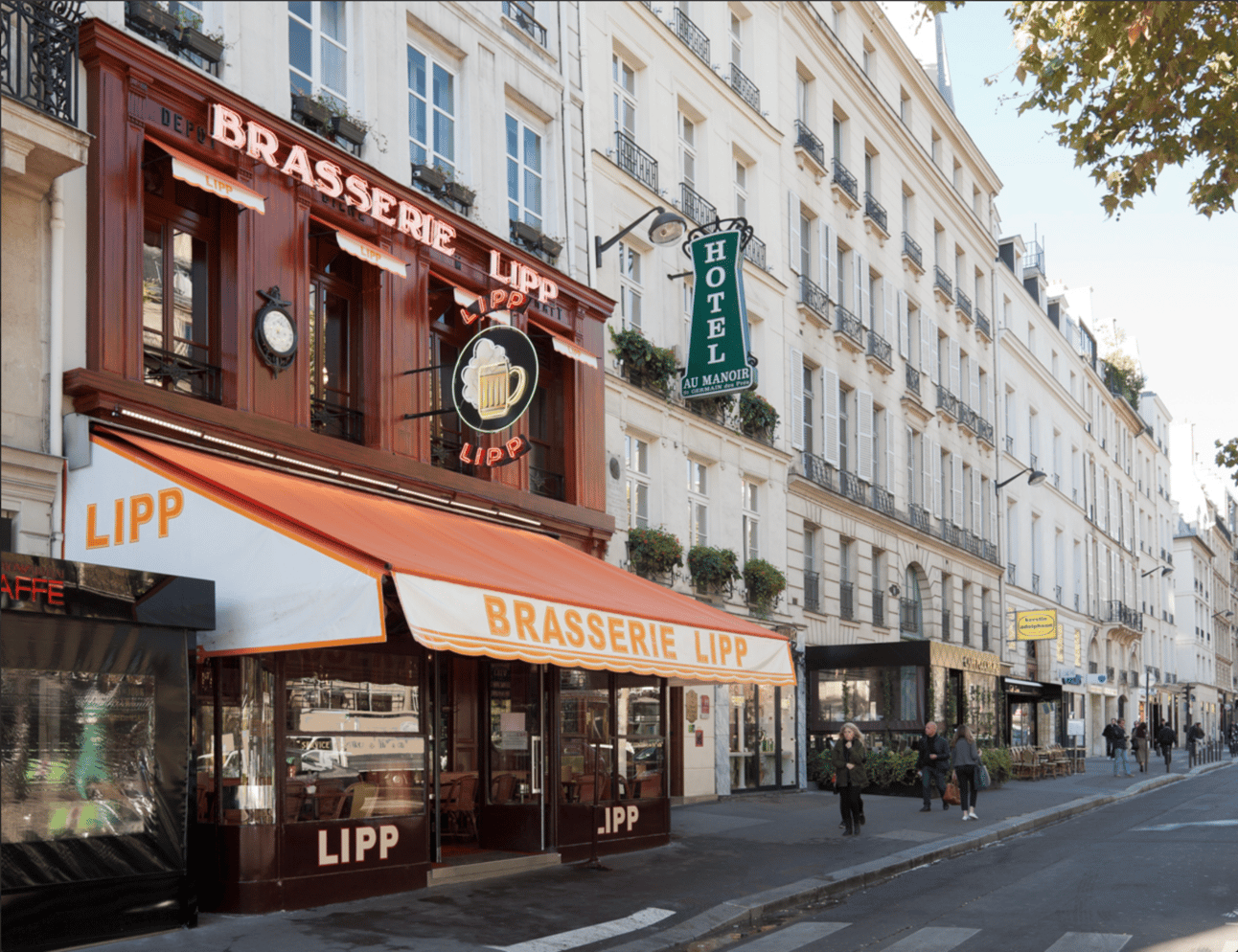
Brasserie Lipp
In the heart of Paris' bohemian Saint-Germain-des-Prés neighborhood, a legendary brasserie stands as a testament to the city's vibrant café culture: Brasserie Lipp. With its gleaming mirrored walls, green-and-gold ceramic tiles, and wood paneling, Lipp transports patrons to a bygone era, making them feel as though they're part of a Paris that once was.
Established in 1880 by Léonard Lipp, a refugee from Alsace, the brasserie became an instant hit among the Parisian elite. And over the years, it has been much more than just a place for coffee and meals. It's been a meeting point for intellectuals, artists, and politicians. Names like Ernest Hemingway, Marcel Proust, and former French President François Mitterrand have echoed within its walls. Chances are, on any given day in the past, a renowned writer might've been penning a classic novel in one corner while a politician discussed policies in another.
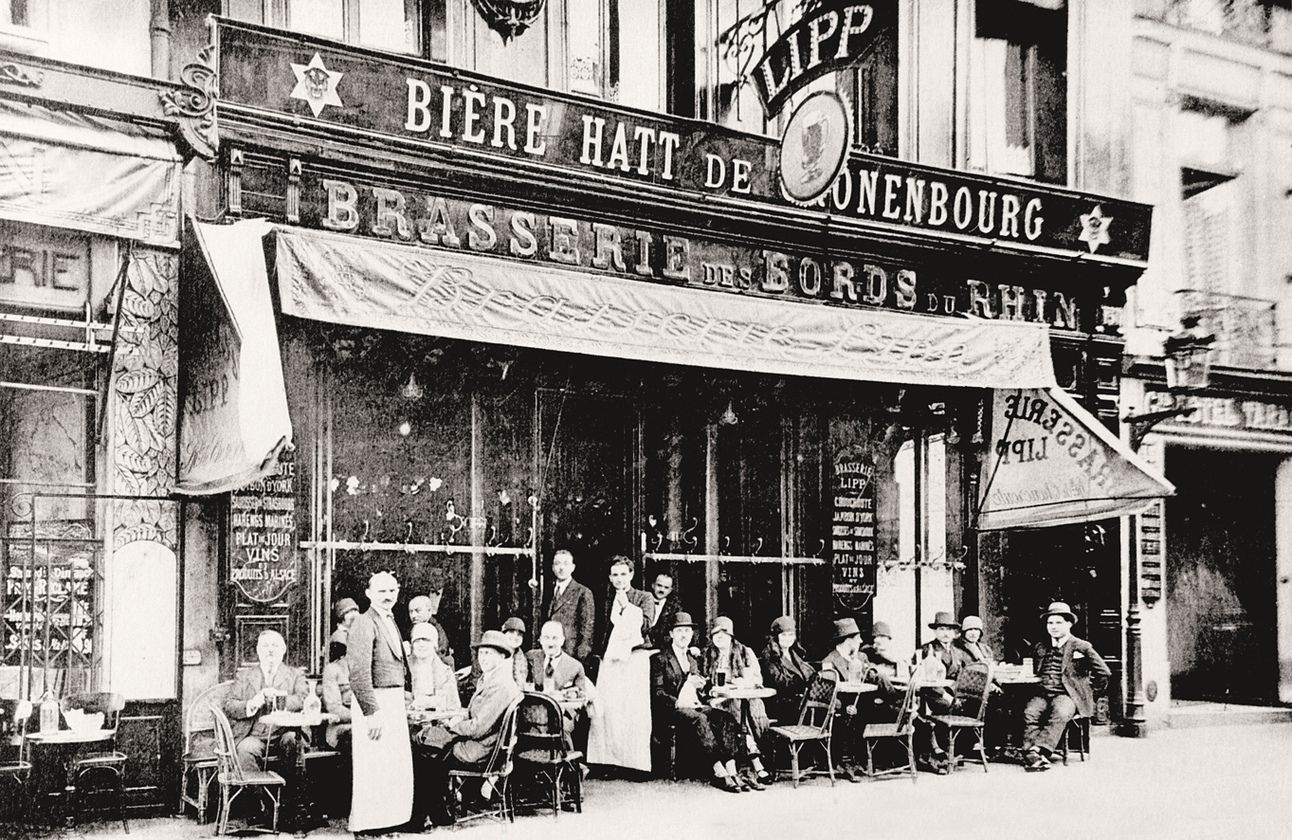
Brasserie Lipp
But what truly sets Brasserie Lipp apart is the atmosphere. The hustle and bustle, the waiters rushing about in their crisp white aprons, and the gentle hum of hushed conversations make it a lively yet intimate setting. The menu, rooted in traditional Alsacian dishes, offers delectable meals, from Choucroute Garnie (sauerkraut with meats) to the timeless pot-au-feu.

Brasserie Lipp
However, it's essential to set expectations. While the cuisine is delightful, the ambiance and the history are the real attractions. The dishes serve as a complement to the overarching experience — one of nostalgia, charm, and the allure of Parisian elegance.
For a visitor or even a local, a visit to Brasserie Lipp is not just about sipping coffee or enjoying a meal. It's about immersing oneself in Paris's rich tapestry of history, culture, and timeless allure. When in Paris, take a moment to step into Lipp, let the world outside blur, and savor the magic of an establishment that has witnessed over a century of whispered secrets and stories.
Hidden Gems: The Enchanted Fairground – A Journey Through Musée des Arts Forains

Musée des Arts Forains
Tucked away in the quiet Bercy neighborhood of Paris, the Musée des Arts Forains is a whimsical journey into the world of vintage fairgrounds, carousels, and entertainment arts. Far from the usual museum experience, this place comes alive with color, sound, and movement.
Created by Jean Paul Favand, a passionate antique collector and actor, the museum showcases a carefully curated collection of showpieces from 1850 to 1950. These aren't just artifacts behind glass panes; the Musée des Arts Forains is a living museum. Here, visitors are not only allowed but encouraged to touch, play, and even ride on some of the exhibits.

Musée des Arts Forains
As you wander through the museum, you'll be transported to the golden age of fairs and carnivals. Admire the ornate wooden carousels adorned with intricate carvings, experience the thrill of century-old fairground games, and immerse yourself in the theatrical settings inspired by Venice's carnival and the Belle Époque era.
But what truly sets this museum apart is its attention to immersive storytelling. Guided tours often come alive with music, mechanical animations, and theatrical lighting, ensuring that visitors are not just observers but active participants in this nostalgic journey.

Musée des Arts Forains
Yet, perhaps the most enchanting aspect of the Musée des Arts Forains is its sense of mystery. It’s a place that many tourists overlook, making it a serene escape from the bustling streets of Paris. A visit here is not merely about observing objects but about recapturing the childlike wonder of days gone by.
For those yearning for a touch of magic, a pinch of nostalgia, and a unique experience in the City of Lights, the Musée des Arts Forains is a must-visit. This isn't just a museum; it's a testament to the timeless allure of fun, fantasy, and fairground arts.
Travel Tips: Serenity Amidst the Streets – Paris' Hidden Courtyards

©️2022 James Christopher Knight: We found this adorable courtyard while walking to dinner one evening. As a resident exited the oversized door leading to this courtyard, I saw this scene and hustled inside with my camera.
The grand boulevards of Paris, with their elegant façades and bustling crowds, are iconic in their own right. Yet, for the seasoned explorer, what lies behind these imposing structures often holds the most allure. Quietly tucked away from the frenetic rhythm of the city streets are the "cours" – Paris' enchanting courtyards.
These spaces, sometimes glimpsed through iron gates or archways, offer an unexpected oasis. They’re pockets of tranquility where the sounds of the city seem distant, replaced by the soft rustle of trees and the gentle chatter of residents.

Cour de Rohan
One of the most mesmerizing of these courtyards is the Cour de Rohan. Settled between the Latin Quarter's busy streets, it's a succession of three courtyards, each more beguiling than the last. The cobblestone grounds, dappled with sunlight filtering through the leaves, transport you to a different era. Flanked by ancient buildings, the courtyards of Rohan are a testament to the architectural layers of the city, each with tales spanning centuries.
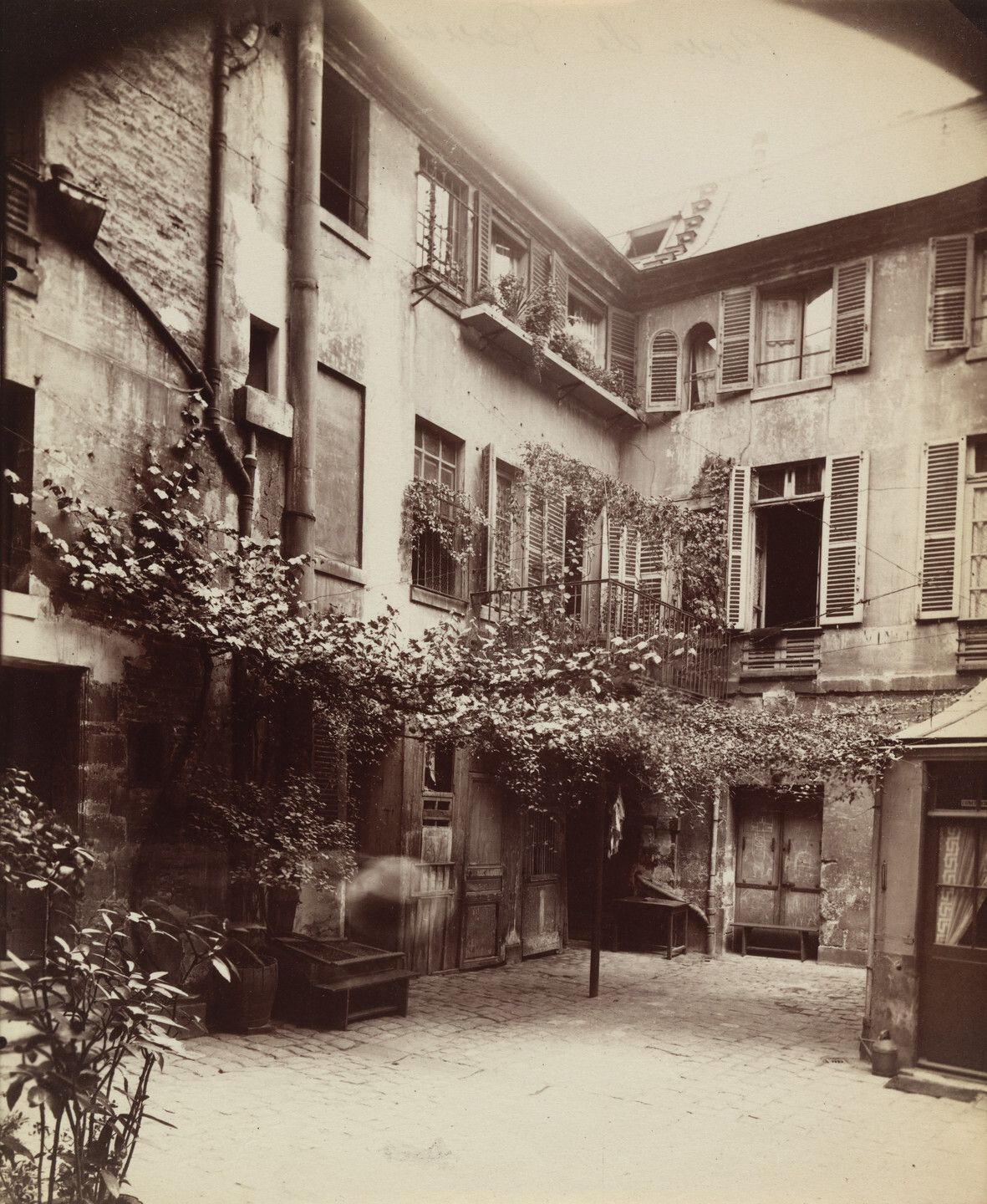
Cour de Rohan circa 1898 - Photographed by Eugene Atget
But Cour de Rohan is just one among many. Every arrondissement in Paris holds its secret courtyards, waiting to be discovered. Some are adorned with greenery, turning them into lush gardens, while others carry the timeless charm of ivy-covered walls and historic sculptures.
For those keen on diving deeper into the Parisian spirit, these courtyards offer a unique perspective. They remind us that sometimes, the real magic of a place isn't just in its grand landmarks but in the hidden, quiet corners where life unfolds at its own pace.
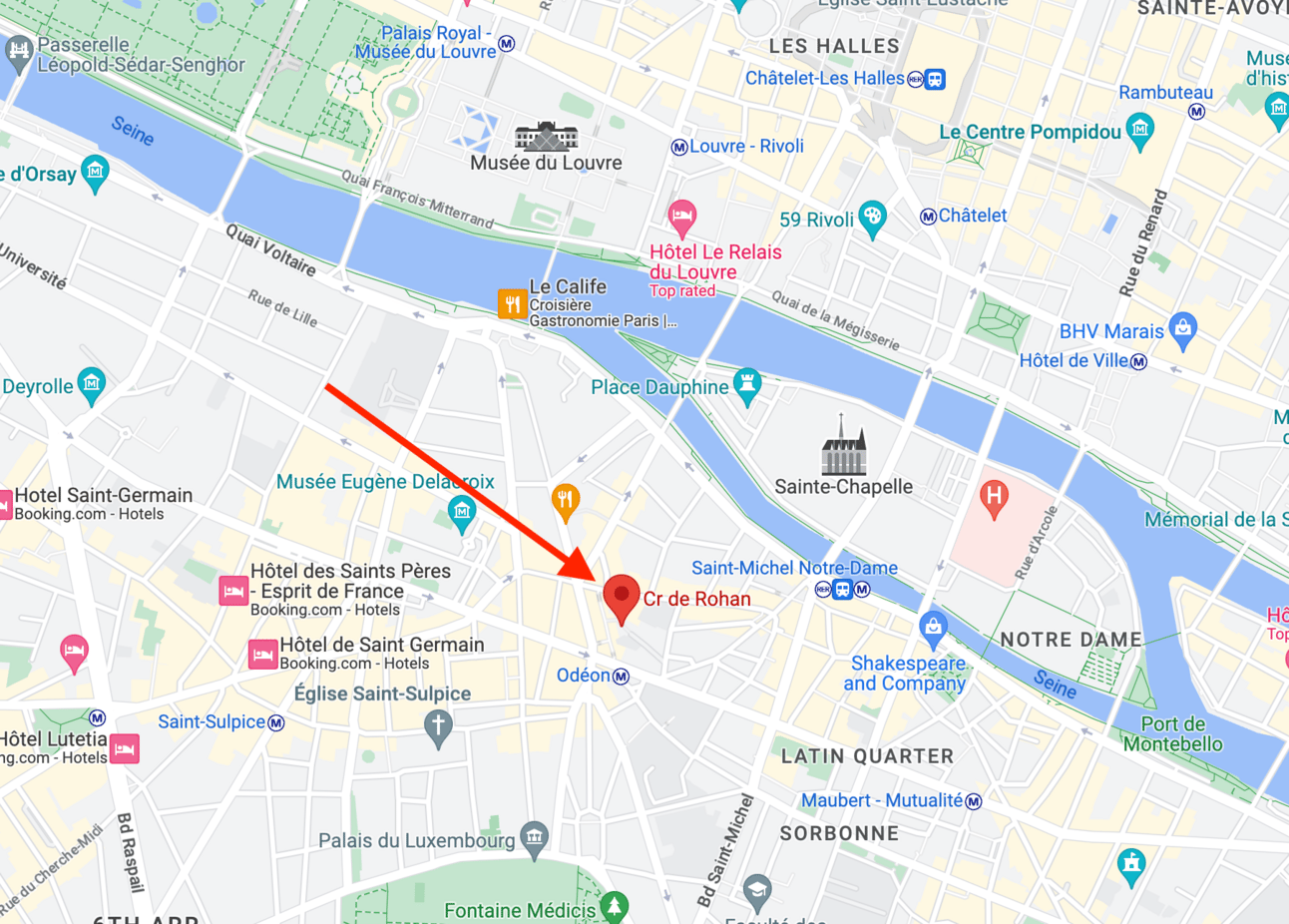
So, on your next wander through the city, be daring. Peek through those gateways, stroll down seemingly ordinary pathways and let Paris surprise you with its tucked-away treasures.
Art & Literature: Marguerite Duras – Echoes of Colonial Vietnam in "The Lover"
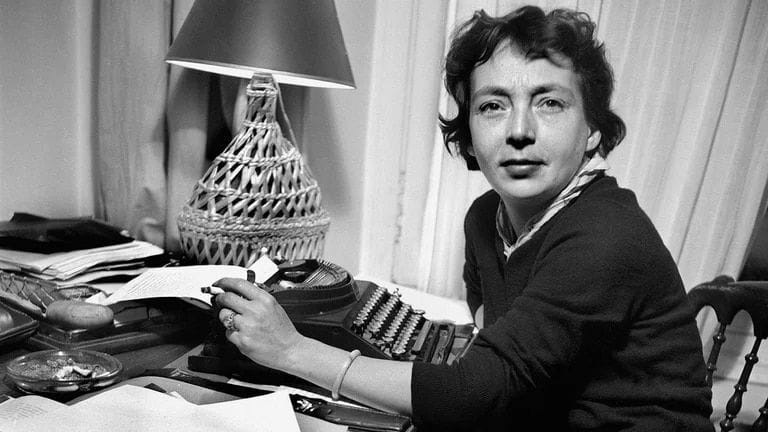
Marguerite Duras
Marguerite Duras, one of France's most celebrated 20th-century writers, crafted stories that deftly wove together themes of love, despair, and politics. Beyond the rich tapestry of her narratives, however, lay the echoes of her life – particularly her formative years in colonial Vietnam.
Born in 1914 in what was then French Indochina, Duras' early life was marked by hardship and familial tensions. These experiences, set against the backdrop of an ever-changing political landscape, profoundly influenced her writing. The cross-cultural interactions, class dynamics, and raw, emotional complexities of her environment found their way into her narratives.
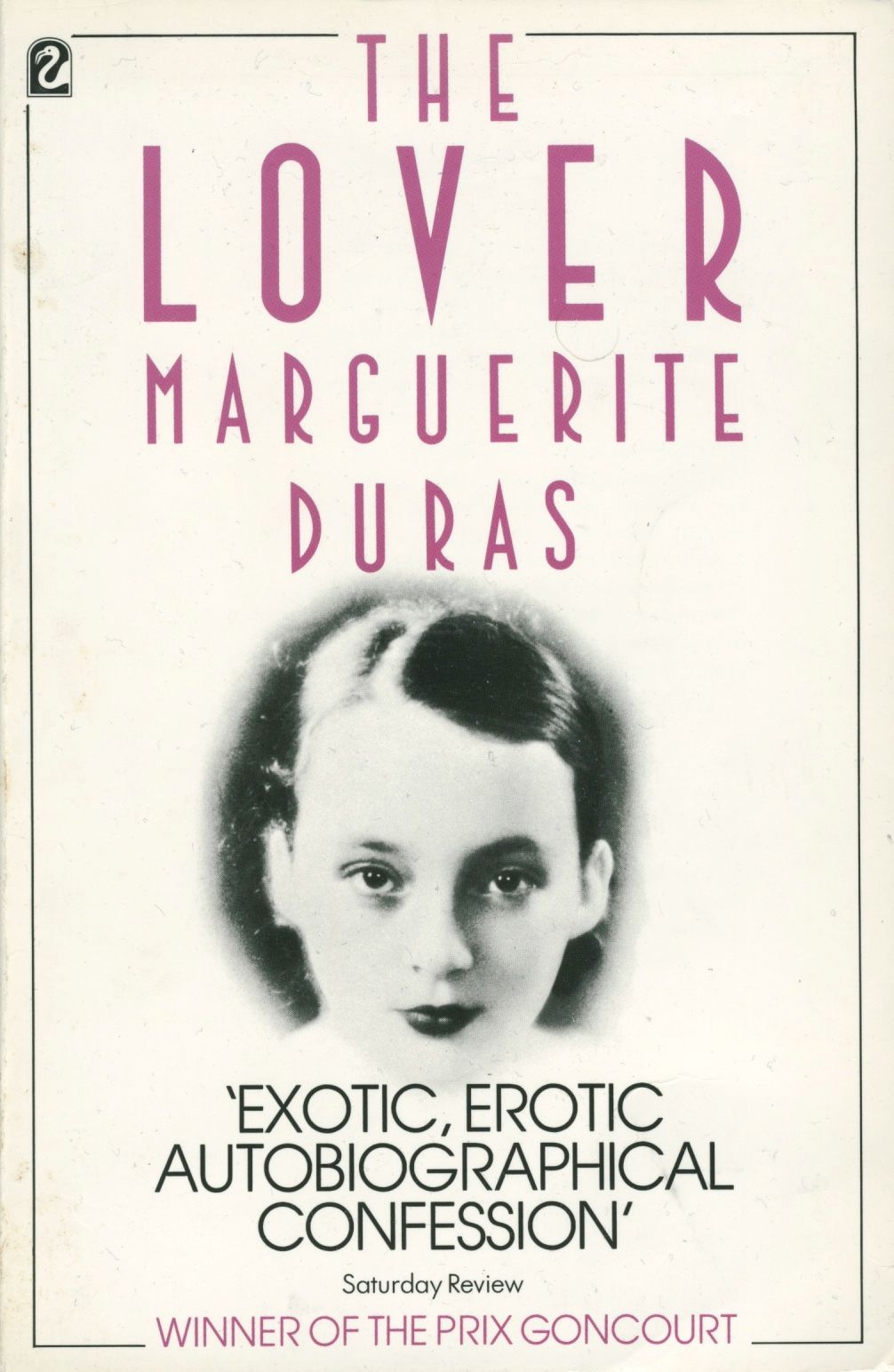
Arguably, her most famous work, "The Lover," is a testament to this intertwining of personal history with fiction. Set in Saigon in the 1920s, it tells the story of a tumultuous and forbidden love affair between a young French girl and a wealthy Chinese lover. While the novel is not a direct autobiography, the shades of Duras's life are evident. The work captures the socio-economic disparities of the time, the colonial hierarchies, and the delicate dance of passion and power.
"The Lover" is a haunting exploration of love beyond societal norms, but it's also a poignant reflection on the colonial experience – what it means to exist between two worlds, neither entirely belonging to one nor the other. Duras once remarked on the blurred lines between her life and her literature, noting that "The Lover" was a kind of "instant novel," drawn from memories and emotions that were almost too vivid to be confined to the realm of fiction.

Duras' ties to Vietnam weren't just limited to her youth. With its lush landscapes and cultural intricacies, the country remained a source of inspiration throughout her career. Her nuanced depictions shed light on the struggles and realities of colonial existence, making her works both intimate and universal.
For those eager to delve into the worlds Marguerite Duras created, beginning with "The Lover," offers a poignant love story and a window into the colonial histories and personal sagas that shaped one of France's literary giants.
A Peek into History: Père Lachaise Cemetery – Where Stories of Paris Linger

Père Lachaise Cemetery
Père Lachaise is not merely a cemetery; it attests to Paris's intricate tapestry of history. Sprawling over 44 hectares, it is the city's largest burial ground and arguably its most famous. But beyond its celebrity inhabitants, Père Lachaise holds a more profound historical significance.
Established in 1804 by Napoleon Bonaparte, the cemetery was initially considered too far from the city and garnered little interest. However, strategic moves like transferring the remains of revered writers Molière and La Fontaine to the grounds soon made it a coveted resting place.
As you meander through its cobblestone paths, you're not only walking among tombs but amidst stories that shaped the French capital. The Commune of Paris in 1871, a radical socialist and revolutionary government that ruled Paris for two months, met its tragic end at the cemetery. The final fighters made their last stand against Versailles troops on these hallowed grounds. Today, the Mur des Fédérés (Wall of the Federals) stands as a solemn reminder of the 147 Communards who were shot and thrown into an open trench at the base of the wall.

Père Lachaise Cemetery
World War I and II also cast their shadows over Père Lachaise. The cemetery houses several memorials dedicated to the victims of war, including foreign soldiers who fought alongside the French. The stories of resilience, sacrifice, and love during these turbulent times are etched into the granite stones, waiting for those willing to pause and listen.
While the tales of luminaries like Oscar Wilde, whose tomb is often adorned with lipstick kisses, or The Doors' frontman, Jim Morrison, might attract many, the true essence of Père Lachaise lies in its silent chronicles of Paris's past.
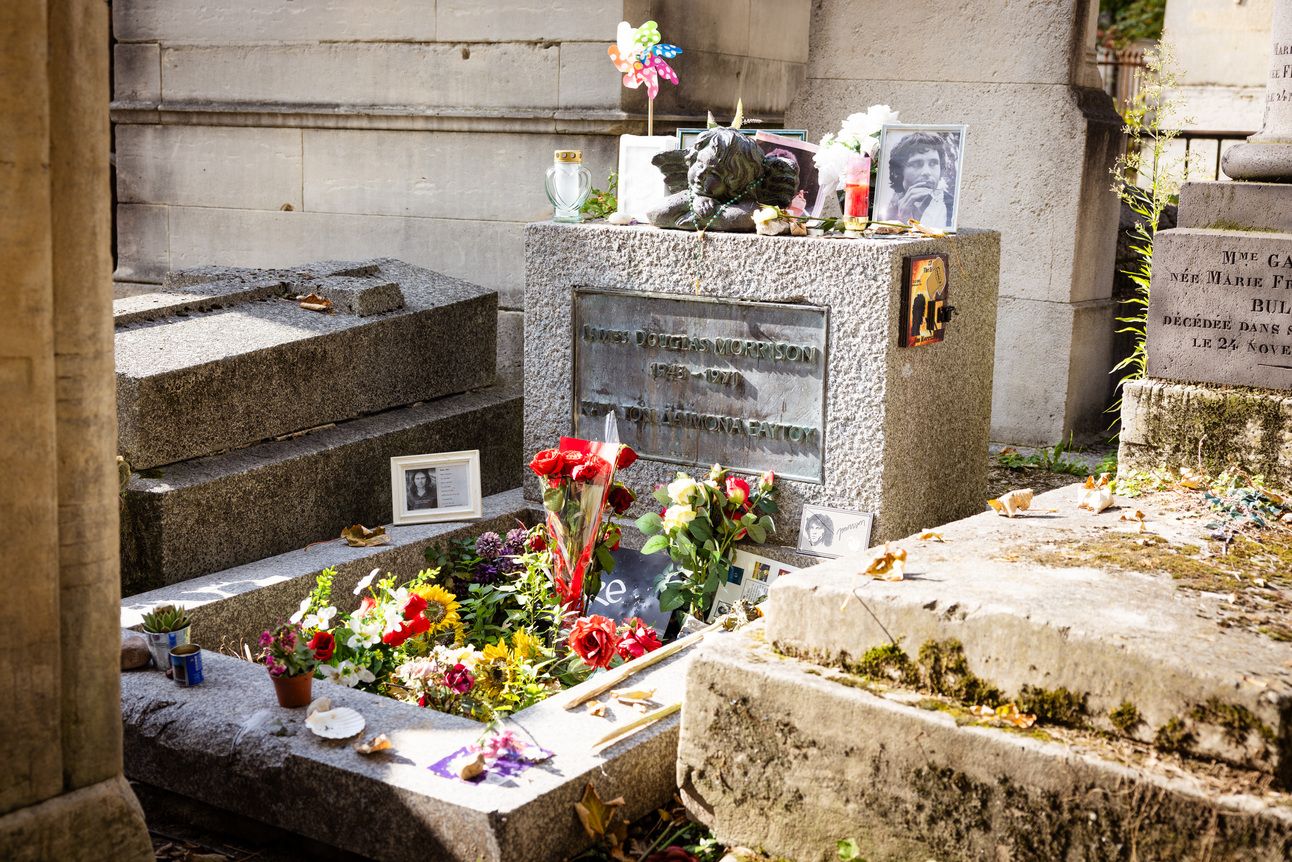
Jim Morrison's Tomb - Père Lachaise Cemetery
Whether you're a history buff, an admirer of art and sculpture, or simply someone seeking tranquility, Père Lachaise offers a journey through time. Each tombstone, crypt, and memorial narrates a tale, making the cemetery not just a place of eternal rest but a living archive of the City of Lights.
Fun and Unusual Stuff: Paris From a Balloon!

Have you ever dreamed of seeing Paris from a bird's eye view but wish to skip the long lines at the Eiffel Tower? Here's an enchanting alternative: Le Ballon de Paris. Situated in the verdant Parc André-Citroën, this tethered hot air balloon offers adventurers an unparalleled perspective of the City of Light.
As you gently ascend, watch the cityscape unfold beneath you. Paris' iconic landmarks, from the winding Seine to the majestic Notre-Dame, seem almost miniature, nestled amidst the vast urban tapestry. The experience is especially magical during the golden hours of sunrise or sunset when the city is bathed in a soft, radiant glow.

Apart from the breathtaking views, the balloon also serves a functional purpose. Its color changes depending on the air quality, acting as an atmospheric barometer for Parisians. So, it's not just an attraction, but a symbol of the city's commitment to environmental awareness.
For those seeking a unique and serene way to appreciate Paris, Le Ballon de Paris is a must-visit. Whether you're a romantic, a photographer, or simply someone chasing novel experiences, floating above Paris in this historic balloon is an adventure to remember.
